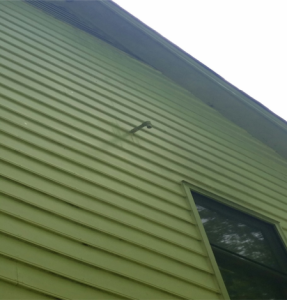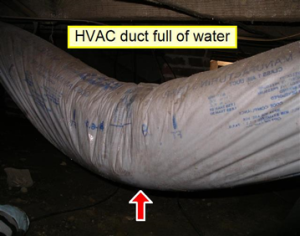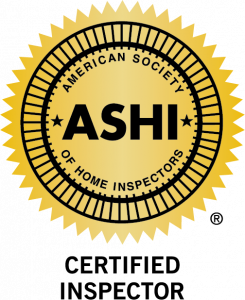Air Duct Cruelty- What it is and How to Avoid It
Most Heating Ventilation and Air Conditioning Manufacturers (HVAC) recommend that their units are serviced once per year by a licensed or certified HVAC contractor. This is important in order to ensure that the equipment is running efficiently and that you get the most years of service from it. Replacing the entire unit can be very expensive, so giving it yearly TLC can be a small price to pay.
Here’s why.
Water can be a breeding ground for germs and the air blowing in the ducts can carry these germs into the home. How could this have happened?

Jimmy Fallon is totally disgusted that air blowing through sagging air ducts filled with water can bring germs into the home.
In very humid climates, such as we have in North Carolina, an average HVAC unit can produce between 10 to 20 gallons of water a day. Where does that water or condensate go? It’s supposed to go outdoors. In split systems, it’s supposed to be piped from the evaporator coil or air handler, which is located inside the home and travel to the outside
In package units, the condensate pipe is connected to the unit which is already outdoors. During my recent inspection, I noticed that the condensate line of the package unit was completely covered with leaves and dirt which prevented the water from leaving the unit. If the water can’t exit the unit, then condensation builds up in the ducts.
It’s also possible for the condensate line to become obstructed with mold and fungal material, that’s why it’s important to check it periodically. This could happen if the PVC line is not sloped enough for the water to drain easily. How can you check the line? The easiest way is for you to observe water leaving is when the unit is running in AC mode. However, as discussed earlier, this would be part of a yearly preventative maintenance check by a certified HVAC technician. Having a yearly HVAC checkup can provide peace of mind, comfort, better efficiency, and reduced costs. And, of course, will keep you from being reported to that fake watch dog group the N.C.A.D.C. (North Carolina Air Duct Cruelty).





